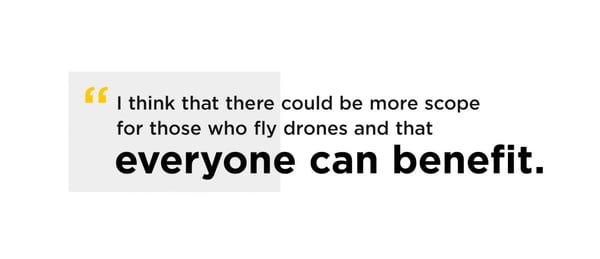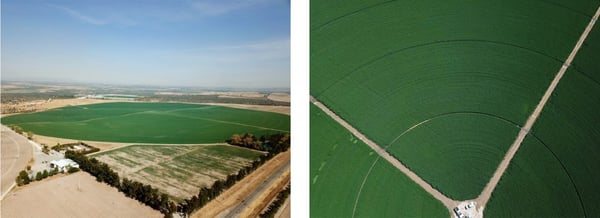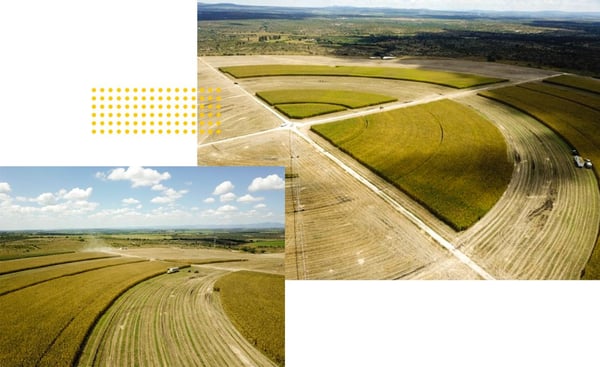Over the past decade, DJI and the commercial drone industry have grown at a rapid pace. We have not only created products that show the extent of our innovation but also increased the diversity and number of people who use our products. In celebration of International Women’s Day, we are sharing stories of female pilots around the world who have contributed to pushing the boundaries of innovation.

Today, we’re introducing Jessika Guadalupe Rodríguez Badillo, a marketing and graphic design graduate who found her passion in aerial photography and video. Her love for taking aerial shots and sharing them with friends led her to exploring opportunities in using the technology for crop management in her hometown in Mexico.

Q: When did you first become interested in drones? How did it turn from a hobby to a business?
A: My first encounter with a drone was during my stay in Madrid, Spain, to earn my master’s degree. It was near Christmas in 2015 when I was looking for an action camera for my father. While doing the research, my attention was suddenly drawn to a peculiar-looking device with a camera. Someone told me that it was called a drone. I loved the idea of having one, but passing the airport with a drone of that size back then was a very complicated task, so I decided to leave it for later. When I returned to Mexico with my masters degree, I came across a drone again, the Phantom 3 Standard, and finally talked myself into purchasing it.
I loved the idea of seeing things from another perspective, of showing the world what you are passionate about in a way that’s at-once simple and impressive. Little by little, I began to see more possibilities of what I can do with this technology. There were not many people who used drones around me back then, so there was as much to learn as there was to accomplish.

I started to seek ways of how I could help my friends in agriculture. I used to fly my drone over farmlands and take still shots. I just thought the photos looked beautiful and interesting, but my farmer friends saw something else. They were seeing how drones can help detect some deficiency in the cornfields by the difference of color in the plants. This helped increase efficiency in manpower and time while saving money.
Q: What triggered the idea to use drones to help agronomists? What kind of research did you have to systemize this work?
A: I live in Aguascalientes, right in the center of Mexico, where there are still some agronomists. They do an incredible job with their fields; some would call it magic. It was natural for me to be passionate about using drones for this. Seeing how these fields begin to turn green and full of life was just beautiful.
I have some friends who shared their problems from crop diseases, climate change, pests, and planting deficiencies. Occasionally, the crops are so large that it is almost impossible to see the deficiencies that complete planting can have. This is where my drones come in. The aerial view will always give a very clear picture of how planting is found. This way they can solve the problems before they get worse.
I monitor ranches of up to 200 hectares, which is difficult to do with the naked eye. Since the fields are very large, there are places that the view does not allow us to access from a van or a tractor. However, drones have no problem crossing from one side to the other in a matter of minutes. The aerial view can also provide very detailed images of each of the parts that are sown. These ranches use sowing circles divided into four quadrants, making it easier to review each thoroughly.

I can also use the onboard camera for a more detailed review. By recording and archiving videos, we can have a historical record to give clues to any issues in the crop. We can see how weather, wildlife, human intervention, or a combination of the three were responsible for poor conditions or an underwhelming yield. These visual clues have become hugely important.
Q: What was the most memorable project you did in this journey? Would you like to share any anecdotes?
A: My drone has shown me that each project is memorable in its own ways. Because of this, losing a drone has been the most memorable.
I was flying a route over a cornfield when the live view on my phone screen suddenly froze. After failing to reconnect, I looked around, hoping the drone was hovering in place or had returned to its takeoff point. Not only did I fail to find it, but it turned out that I hit some cables mid-flight. This miscalculation cost me my drone, but on the bright side, it gave me a chance to upgrade to the Mavic 2 Pro.
In terms of capturing images, one comes to mind. An agronomist approached me to make a video of the process in a typical season. This simple project turned into a way for me to give back to the people of his profession. I wanted to show the dedication and passion for their work, without which we would not have food on our tables.
The video covered an entire four-month sowing season, from planting the corn until the ears are stored in a silo. Throughout the recording, they provided detailed explanations of what turns out to be a beautiful profession. He showed me firsthand of the pests that attack corn buds, how they evolve from larvae to butterflies, and how rain plays an essential role in eliminating them. They also shared the dramatic shift of the industry over the last 50 years, when his own father was learning the trade. The changes in machinery, process, seeding, and climate both evolved and hampered farming in ways that the job is almost completely different than it was in his father’s time. The learning experience was invaluable, keeping my own passion for doing my part in studying agriculture.
Q: Is there anything you’d like to share with other women who fly drones?
A: I want to gradually form an exclusive group for women pilots to share experiences and go flying and photograph everything that the world cannot see from the air. I’d love to see exhibitions and galleries of aerial photographs, all by female artists, sharing all the different ways that we see the world from up there.
Q: Do you have any suggestions to developers and designers at DJI for future products?
A: It would be great to see drones being more automized with improved recognition features to do more. And it would be good to have Spanish version of the app for those from my part of the world!
Q: In what other areas do you see the drone technology being used in the future?
I know that drones are used in several fields. The ones I find most interesting is search and rescue, where there could be more scope for flying for everyone’s benefit. Drones can also help a lot in forest fires and surveying archeological sites.

If you would like to get in touch with Jessika, please contact her at jr.badillo@hotmail.com for more information and stories from her career.
